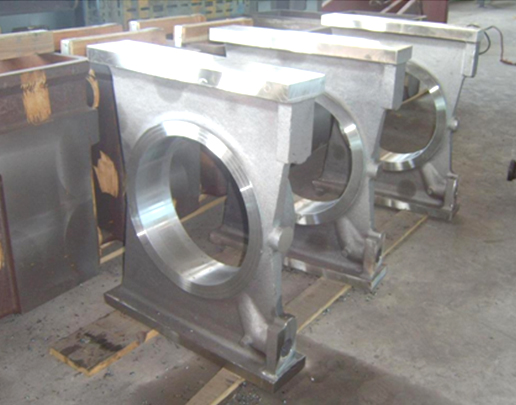The pressure regulating molding Dalian casting technology is mainly aimed at the casting production of large and complex thin-walled parts. Using this technology to produce large and complex thin-walled castings can achieve better charging and shrinkage capabilities, refine casting particles, increase density, and significantly improve performance. With the continuous research and development of this technology, its application effectiveness and scope are continuously enhanced and expanded. At present, the pressure regulating precision casting technology has been applied to the production of large complex thin-walled aluminum alloy castings, with obvious technical benefits.
In today's era, castings are mainly used as raw materials for equipment parts, and some fine castings can also be immediately used as equipment parts. Castings account for a significant portion of mechanical goods. For example, in large tractors, the net weight of castings accounts for approximately 50-70% of the total machine weight, 40-70% in agricultural machinery, and 70-90% in machine tools and internal combustion engines. Among various castings, mechanical castings have a wide variety and complex appearance, accounting for about 60% of the total output value of castings.
How to Cause Shrinkage and Looseness of Dalian Casting Parts
1. Structural reasons for castings
Due to the excessively thick cross-section of the casting, shrinkage holes are formed due to poor shrinkage during filling. The uneven wall thickness of the casting results in shrinkage or porosity at the hot spot of the wall thickness. Due to the small diameter of the casting hole, the sand core that forms the casting hole is heated by high-temperature metal liquid and remains in a high-temperature state for a long time, reducing the solidification rate of the metal on the surface of the casting hole. At the same time, the sand core provides a channel for gas or atmospheric pressure, leading to shrinkage and loosening of the hole wall.
2. Reasons for melting
The high gas content of liquid metal causes it to precipitate in the form of bubbles during the cooling process of the casting, preventing adjacent liquid metal from flowing towards this area for shrinkage, resulting in shrinkage cavities or porosity. When the carbon equivalent of gray cast iron is too low, it will reduce the precipitation of eutectic graphite during the solidification of molten iron, reduce the effect of graphitization expansion, increase solidification shrinkage, and also reduce the fluidity of molten iron.
3. Reasons for pouring
The pouring temperature is too high, which increases the liquid shrinkage of the liquid metal; When it is too low, it will also reduce the feeding capacity of the riser, especially when using a bottom pouring system, which is more obvious. The casting often produces shrinkage cavities and porosity in the lower part. When the riser is not fully filled or the exposed riser is not replenished with molten metal for large and medium-sized castings, this will reduce the feeding capacity of the riser and cause shrinkage or porosity in the casting.
Good repeatability, with precision casting characteristics. High surface finish of cast iron parts. The sand core and core making departments have been abolished, and casting defects and waste products caused by core making and core laying have been eliminated. Not matching the box and not taking the mold greatly simplifies the forming process, eliminating casting defects and scrap caused by taking the mold and packing the box.
If the working temperature of each part of the casting can be common, microstructural stress cannot occur during solid phase transformation, only microscopic environmental stress can occur. When the phase transition temperature is significantly higher than the critical temperature for plastic elastic change, the development of the alloy during phase transition is in a plastic state. Even if each part of the casting is temperature controlled, the phase change stress is not significant and will gradually decrease or even disappear.






